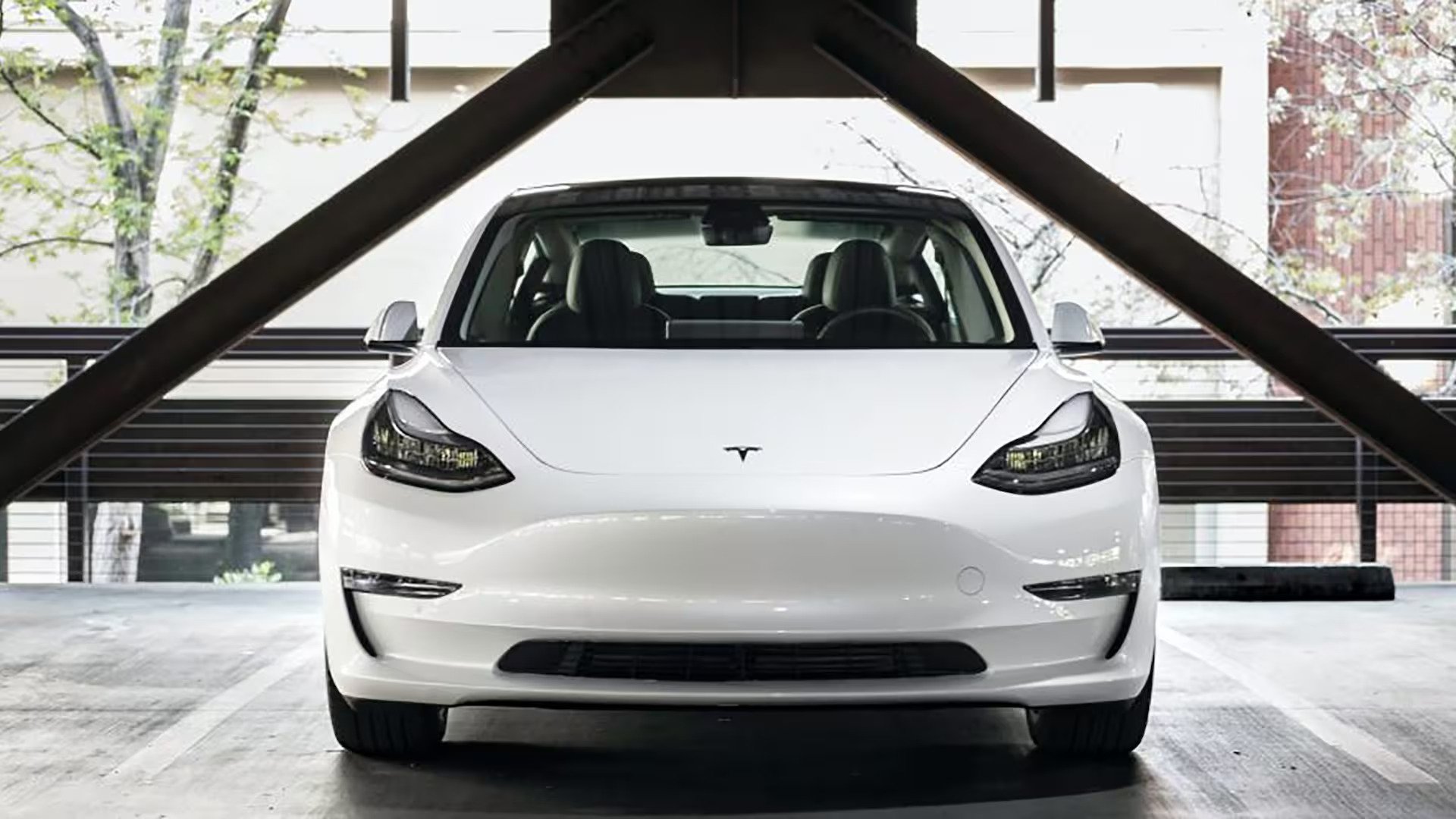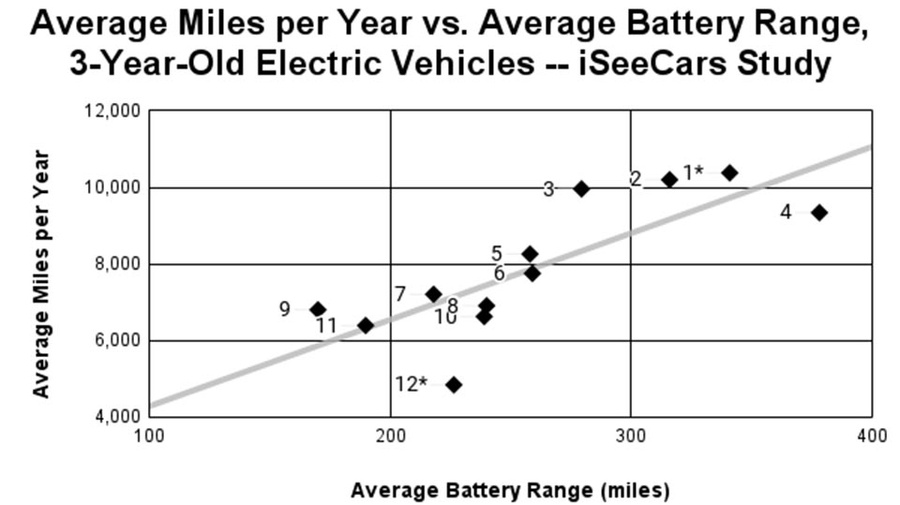Tesla Models Lead as the Most-Driven Electric Cars
According to the study, Teslas are the most-driven electric cars, with all four models ranking at the top of the list. On average, electric cars are driven 9,059 miles per year, which is almost 29 percent less compared to the 12,758 miles driven by gas-powered vehicles.
As a brand, Tesla stands out for having the most-driven electric cars. The Tesla Model X, a midsize family SUV with three rows of seating, takes the lead as the most-driven electric car, averaging an impressive 10,378 miles per year. The other Tesla models, including the Model Y, Model 3, and Model S, also surpass the average mileage for EVs.
| Rank | Model | Avg. Miles Driven Per Year | Avg. EPA Battery Range (miles) | Avg. Price |
|---|---|---|---|---|
| 1 | Tesla Model X | 10,378 | 341 | $76,193 |
| 2 | Tesla Model Y | 10,199 | 316 | $49,406 |
| 3 | Tesla Model 3 | 9,960 | 279 | $37,909 |
| 4 | Tesla Model S | 9,340 | 378 | $66,105 |
| 3-year-old EV average | 9,059 | 279 | $45,147 | |
| 5 | Hyundai Kona Electric | 8,260 | 258 | $29,961 |
| 6 | Chevrolet Bolt EV | 7,753 | 259 | $25,928 |
| 7 | Audi e-tron Sportback | 7,210 | 218 | $53,602 |
| 8 | Jaguar I-PACE | 6,910 | 240 | $51,090 |
| 9 | Hyundai Ioniq Electric | 6,803 | 170 | $24,748 |
| 10 | Kia Niro EV | 6,630 | 239 | $32,301 |
| 11 | Nissan LEAF | 6,395 | 190 | $25,917 |
| 12 | Porsche Taycan | 4,846 | 226 | $117,484 |
Electric Cars: Cost and Driving Behavior
While EVs offer several environmental benefits, they do come with a higher price tag compared to internal combustion vehicles. The study reveals that three-year-old electric vehicles have an average price of $45,147, which is 47 percent higher than the average price of $30,760 for three-year-old internal combustion cars. However, despite the higher cost, electric cars are driven less.
Karl Brauer, iSeeCars Executive Analyst, suggests several factors contribute to this driving behavior discrepancy. Electric cars often serve as second or third vehicles in households and are used less frequently for road trips. However, the most significant factor affecting driving behavior appears to be range anxiety associated with EVs.
The Impact of Battery Range on EV Use
The study highlights a strong relationship between an EV's range and its driving behavior. It reveals that increased range translates to increased usage. For every additional mile of range an electric car offers, owners are willing to drive an additional 23 miles per year.
To match the annual driving distance of traditional gasoline-powered vehicles (12,758 miles), EVs would need an additional 161 miles of range, on average. This would increase the average range of three-year-old electric cars from 279 miles to 440 miles.
However, achieving this range increase comes at a cost. Excluding the Porsche Taycan due to its outlier pricing, consumers would have to pay an additional $10,000 to gain an extra 26.5 miles of battery range. To reach the desired 161-mile range increase, three-year-old EVs would need to cost an additional average of $60,000, bringing the total average price to an unrealistic $105,147.
Addressing Range Anxiety and Real-World Use Cases
Despite the perceived range anxiety, the study points out that the average car trip is only 9.5 miles, with 95 percent of car trips covering 30.9 miles or less. Only 1 percent of car trips exceed 89.4 miles. Even doubling the distance for a round trip (179 miles) shows that almost all three-year-old EVs have sufficient range to cover these common use cases.
While the charging infrastructure continues to improve, reducing the likelihood of running out of energy, the refueling process for electric vehicles remains a challenge. Unlike gasoline cars, which can be refueled within minutes, recharging an electric vehicle can take up to 30 minutes in the best-case scenario and several hours in most instances.
Until EVs can offer comparable convenience and refueling times at a similar cost, they may face limitations in terms of usage and market demand.
Methodology
iSeeCars.com analyzed over 860,000 model year 2020 used cars from January to mid-May 2023. Battery-powered fully electric vehicles (EVs) were analyzed separately from gas-powered vehicles. The average mileage per year was calculated for each model and used to rank models by their driving behavior; the average price was also calculated. Low-volume models were excluded from further analysis. For EVs, the average EPA-rated battery range was also aggregated, and a simple mathematical model predicting miles driven as a function of battery range was fit to the data. For the top 50 metro areas, a larger time window from 2018 to mid-May 2023 was used.
Source: iSeeCars


